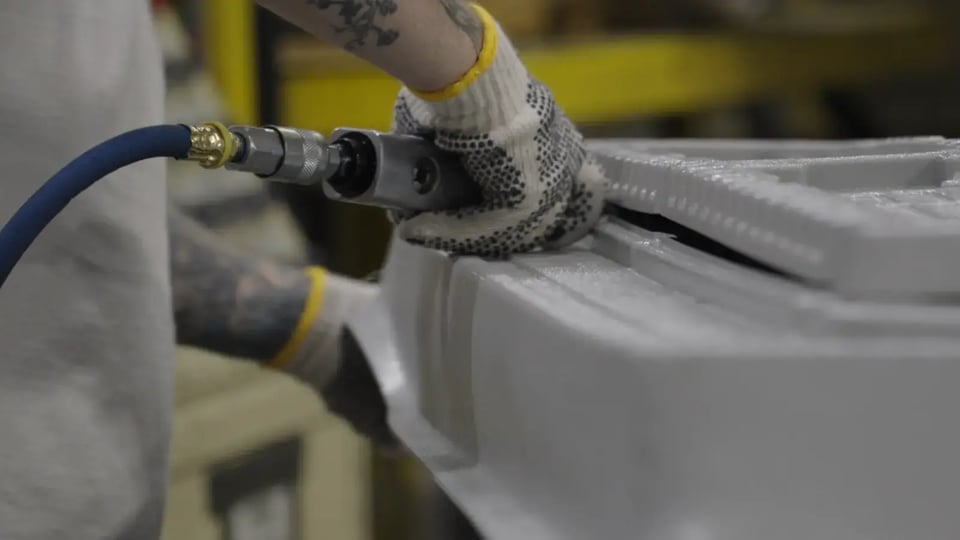Vantage Plastics: Championing Child Care and Community Sustainability Through MiTrishare In...
Overcoming Design Challenges with Custom Thermoforming Techniques

Companies or individuals might seek custom thermoforming solutions tailored to their specific needs for various reasons. Often, they may require parts or components with intricate and complex geometries that conventional manufacturing methods can’t achieve with the same accuracy or are costly alternatives. Whether it's unique curves, undercuts, or deep draws, custom thermoforming offers the versatility to produce such designs efficiently and cost-effectively.
Custom thermoforming leverages the versatility of plastics to produce high-quality, durable parts that meet specific design criteria. Custom thermoforming for manufacturers with complex design needs presents an unrivaled opportunity to bring their creative visions to life.
Understanding Custom Thermoforming
Custom thermoforming generally starts with the development of a unique new design for a customized product, then utilizes a versatile manufacturing process that involves heating a thermoplastic sheet until it becomes pliable, forming it into the specifically designed shape using a mold, and finally cooling it to create a solid object. Due to its ability to efficiently produce intricate and customized products, product manufacturers widely favor this technique with complex design needs such as unique curves, undercuts, deep draws, etc.
Advantages of Custom Thermoforming
Custom thermoforming offers several advantages over traditional manufacturing methods, making it a popular choice for many product designers and manufacturers. One key benefit is its cost-effectiveness. The process requires fewer tooling costs compared to injection molding or rotational molding, which can result in significant savings for manufacturers, especially for small to medium production runs.
Another advantage of custom thermoforming is its unparalleled design flexibility. With thermoforming, manufacturers can create complex shapes, sharp angles, and undercuts that may be challenging to achieve with other techniques. This flexibility allows unique and innovative designs to set products apart.
How Custom Thermoforming Combats Complex Design Challenges
When products require intricate and complex geometries, traditional manufacturing methods may fall short of delivering the desired results. Custom thermoforming techniques fill this gap by offering a versatile and efficient way to accommodate even the most elaborate shapes and structures. By heating a thermoplastic sheet and molding it to precise specifications, custom thermoforming enables the production of unique designs that were once deemed unattainable.
When it comes to design and complex geometries, custom thermoforming offers several advantages and techniques:
- Undercuts and Draft Angles: Thermoforming can accommodate parts with undercuts, which are features that prevent a part from being removed from the mold in a straight pull. Incorporating draft angles (tapered sides) into the design helps release the formed part from the mold.
- Texture and Surface Finishes: Thermoforming allows for replicating various textures and surface finishes, such as wood grain, leather texture, or custom patterns. These textures can be embossed directly onto the mold surface, enhancing the visual appeal and tactile experience of the final part.
- Deep Draws: Thermoforming can form deep draws where the depth of the formed part exceeds its width. Advanced heating techniques and specialized tooling may be required to achieve uniform material distribution and prevent thinning or wrinkling in deep-drawn areas.
- Complex Curves and Contours: Thermoforming can produce parts with complex curves and contours, including compound curves and irregular shapes. Manufacturers can precisely shape the thermoplastic sheet to match the desired geometry by carefully controlling the heating and forming process.
- Multi-Part Assemblies: Thermoforming allows for integrating multiple parts into a single assembly, reducing the need for secondary joining processes. Engineers can optimize part geometry to facilitate assembly and improve overall product performance by designing for thermoforming.
- Thin-Wall Forming: Thermoforming is well-suited for producing parts with thin walls, which can help reduce material usage and weight while maintaining structural integrity. Thin-wall forming requires precise control over heating and forming parameters to prevent material thinning or distortion.
- Complex Cutouts and Cut-Ins: Thermoforming can accommodate complex cutouts and cut-ins in parts, allowing for integrating features such as holes, slots, and recesses. CNC trimming or routing can cut the formed parts to the desired shape and size.
- Variable Wall Thicknesses: Thermoforming enables the production of parts with variable wall thicknesses, which can optimize material distribution and structural strength. Manufacturers can control material flow and thickness distribution throughout the formed part by adjusting heating profiles and mold designs.
- Mold Inserts: Thermoforming allows for the incorporation of mold inserts during the forming process, enabling the integration of additional features or components into the final part. Inserts can include metal fasteners, threaded inserts, or pre-molded plastic components.
Custom Thermoforming Solutions at Vantage Plastics
Vantage Plastics is a leader in custom thermoforming and is known for its innovative and eco-conscious products. Our focus on recyclable and reusable materials underscores our commitment to sustainability. We offer comprehensive solutions through ongoing research, design, and development efforts, from the initial concept to the final product. With diverse capabilities, we tailor our services to meet individual customer requirements. If you require custom thermoforming, contact our team today so we can explore your options together.


